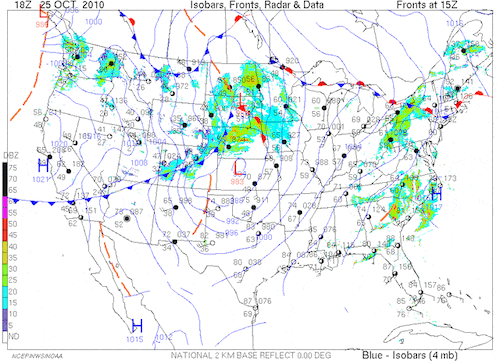
When should I use future weather in building energy modeling, and what climate change model should I use? Is it possible to use future weather files to meet the demands of standards like Title 24 that are based on current climate conditions?
– Forecasting the Future
Dear Forecasting,
It’s exciting to me to know that there are forward-thinking building energy modelers out there that care about designing buildings for future climate. Climate change has everything to do with Title 24’s standards for “energy conservation, green design, construction and maintenance, fire and life safety and accessibility,” as climate affects the yearly profile of meteorological parameters that are input to the building energy models that assess the level of a building’s or a neighborhood’s ability to meet these requirements.
In 2017, like you, a group of scientists began asking if the climate zones that inform building codes were appropriate for new building construction. They recognized that the American Society of Heating Refrigeration and Air-conditioning Engineers (ASHRAE) Standard 169 “Climate Data for Building Design Standards” defined climate zones based on measurements from world weather stations over the past 8 – 25 years, and that the weather that today’s new buildings would see over their 30 – 120 year lifespan would likely be very different from that of the past due to the rapid changes in climate that the world is already witnessing (New et al., 2017). So they analyzed various methods for redefining climate zones using projections from two different models that were cited in the most recent Intergovernmental Panel on Climate Change (IPCC) assessment report. The report includes information on how well each model has predicted different meteorological parameters of past climate, so that researchers can determine which model output is best suited to the research they are doing. A good practice for using climate model output for research regarding the future is to use an “ensemble” of output, or output from several reliable models, so that results can be evaluated within the bounds represented by the lowest and the highest values predicted by the model ensemble.
An interdisciplinary group across weather, climate, population and buildings, in which I am involved (Allen-Dumas et al., 2020), hypothesized that the geometry of building placement in neighborhoods might affect the way wind flows through the neighborhoods and the way that sunlight hits different parts of them, and that careful planning by developers along these lines might maximize temperature management in and across neighborhoods leading to more efficient building energy use. That study used a method called “dynamical downscaling,” in which a weather model takes climate data averaged at, for example, 32km resolution, and estimates the meteorology at a per-building level (90m resolution) so that the immediate meteorology affecting the energy use of each building can be taken into account. Also included in this simulation was a representation within the model of building heights, footprints and spacing.
To investigate urban heat mitigation during extreme heat events expected with climate change, Vahmani et al. (2019) used a weather model to downscale IPCC climate model output to 1.5 km resolution at hourly intervals. They also included satellite information depicting urban vegetation in the weather model so that they could investigate the interacting effects of cool roofs and other types of green design on a city’s ability to cool itself during these events. This group’s next investigation will use a similar modelling approach to examine feedbacks between exhaust from building cooling and the natural urban microclimate under extreme heat conditions.
These are just a few examples of how modelers are using climate projections for research into building energy modeling for the future. Most of the model projections (and some useful visualization tools) are available from the Earth System Grid. I hope you will enjoy reading these and related studies and then take them further with your work as you look at additional ways to help meet the Title 24 standards over a variety of geographic locations and neighborhood conditions.
Melissa Allen-Dumas, PhD
Research Scientist, Oak Ridge National Laboratory
allenmr@ornl.gov
Do you have anything to add or your own answer to contribute? Please share your thoughts by emailing askamodeler@ibpsa.us; you are an expert too! Do you have your own question for the expert? Submit your question to be considered for a future column. Note that questions requiring an immediate response should be submitted to the community of experts at unmethours.com. If you are interested in replying to a question as a featured expert or have any other feedback about Ask a Modeler please email askamodeler@ibpsa.us.


